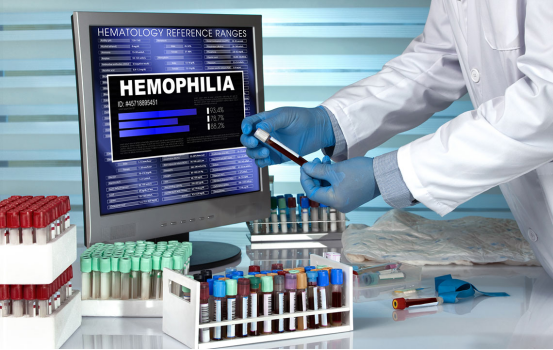Understanding Hemophilia: Diagnosis and Prognosis
Hemophilia is a rare genetic disorder that affects the blood's ability to clot properly, leading to excessive bleeding.
Hemophilia is a rare genetic disorder that affects the blood's ability to clot properly, leading to excessive bleeding.
People with hemophilia tend to bleed easily, and their blood takes longer to clot, which can result in both internal and spontaneous bleeding. This inherited condition is serious but manageable, and although it cannot be cured, there are treatments available to prevent complications and improve quality of life.

Types of Hemophilia
There are two main types of hemophilia:
- Hemophilia A is the most common type, accounting for about 80% of cases. It is caused by a deficiency in clotting factor VIII.
- Hemophilia B, also known as "Christmas Disease," is caused by a deficiency in clotting factor IX.
Hemophilia may also develop later in life in rare cases, a condition known as acquired hemophilia, but it remains a lifelong disorder that requires careful management.
Diagnosing Hemophilia
Diagnosis begins with a thorough review of the patient’s medical history, especially if they exhibit symptoms of bleeding. Blood tests are essential for determining the severity of hemophilia and for monitoring blood clotting ability. Common tests include:
- Complete Blood Count (CBC): This measures the size, number, and types of blood cells. A low red blood cell (RBC) count and hemoglobin levels may indicate prolonged bleeding.
- Prothrombin Time (PT): This test measures how long it takes for blood to clot. It assesses the activity of clotting factors, including factor VIII and IX.
- Activated Partial Thromboplastin Time (APTT): Similar to the PT test, the APTT measures the time it takes for blood to clot and helps assess deficiencies in clotting factors such as VIII and IX.
- Fibrinogen Test: This test assesses the blood’s ability to form clots. It may be performed when other tests show abnormal results.
Prognosis of Hemophilia
Hemophilia severity varies depending on the deficiency of clotting factors. It is classified into mild, moderate, or severe forms. The majority of individuals with hemophilia experience the severe form, which can lead to life-threatening complications, such as bleeding in internal organs, around the airways, or in the skull. Approximately 10% of those with severe hemophilia suffer from intracranial bleeding.
Children with hemophilia often experience developmental challenges, including delayed motor skills, academic difficulties, and emotional or behavioral issues. However, with the right treatments and support, many individuals with hemophilia lead fulfilling, productive lives. Counseling, education, and medical interventions play a key role in improving their quality of life.
The prognosis has improved significantly with the development of clotting-promoting medications, which prevent bleeding episodes, and comprehensive care programs that help manage the disease. These treatments not only reduce complications but also increase life expectancy, although it is generally lower than that of individuals without hemophilia.
For those who receive effective treatment, the life expectancy gap compared to the general population is about 10 years. However, inadequate treatment or the presence of additional health conditions can increase the risk of severe complications. With proper care, people with hemophilia can live longer, healthier lives with fewer joint problems and less risk of life-threatening bleeding.
In conclusion, while hemophilia is a lifelong condition, advances in treatment have significantly improved both the survival rate and the quality of life for affected individuals. Early diagnosis and ongoing treatment are essential to managing this disorder effectively and minimizing its impact on daily life.